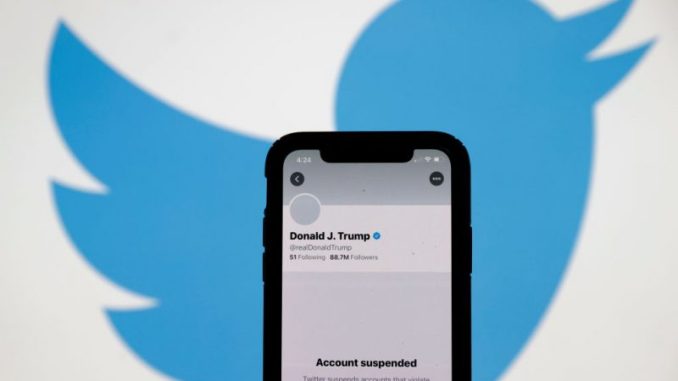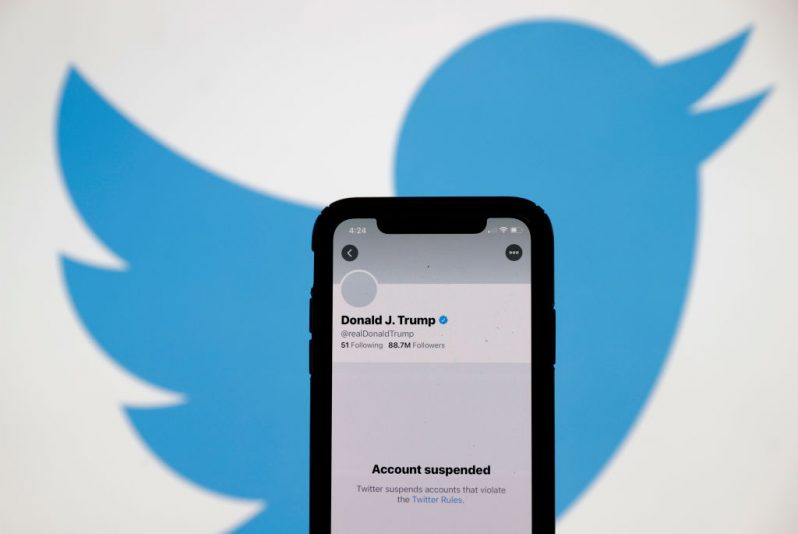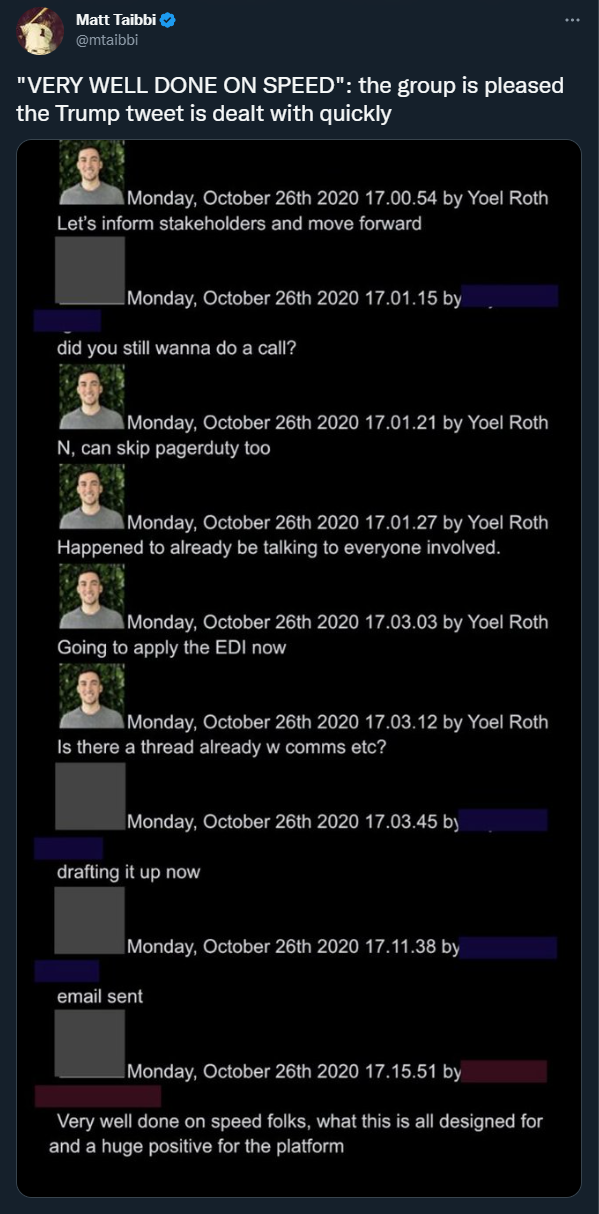

OAN Newsroom Correspondent Sophia Ariel
UPDATED 7:13 PM PT – Friday, December 9, 2022
The third installment of the Twitter Files was released on Friday. This time, the files are focusing on why 45th President Donald J. Trump was removed from the social media platform. This first part of ‘The Removal of Donald Trump’ thread covers October 2020 until January 6th.
Matt Taibbi announced that while talk of banning Trump from Twitter took place from January 6th until January 8th, the framework which led to his banning, was laid out months prior. Senior executives were using subjective moderation to choose what they believe did and didn’t violate the company’s policies.
A slack channel from the company titled “us2020_xfn_enforcement” showed the evolving thinking of top officials in late 2020 until early 2021. Through this channel, employees would discuss election related removals, especially tweets from high profile accounts. During this time, executives were liaising with federal enforcement and intelligence agencies about moderation of election related content.
On posts the company deemed misinformation, Policy Director Nick Pickles was asked by his fellow employee if the company should state that Twitter detects “misinfo” through “ML, human review and partnerships with outside experts?” In response, Pickles said only the word “partnerships” should be used because he wasn’t sure if the FBI and DHS would be described as experts.

A post about the Hunter Biden Laptop situation is proof that Yoel Roth, the then Trust and Safety Chief, had weekly meeting with the FBI and the DHS.

The FBI would regularly send tweets that concerned them to the company.

While examining the election enforcement Slack, Taibbi was not able to find any references to moderation requests from the Trump campaign, the Trump White House, or Republicans. He was told that they exist, however they were absent from the channel.
One instance that started a long conversation in the Slack channel is when former Arizona Governor Mike Huckabee jokingly tweeted that he was filling out ballots for his deceased parents.
In response to his post, Twitter officials claimed that Huckabee was “literally admitting in a tweet to a crime.” The group declared Huckabee to be an “edge case.” However, they ultimately decided to leave him be. Roth suggested that even in a case such as Huckabee’s, where he was joking, the company needed to re-evaluate on what could be considered as misleading.

In order to combat the issue of tweets spreading misinformation, the company would put warning labels on tweets they deemed false.
Twitter was particularly strict on Trump. In one case, Trump quote tweeted an article about 50,000 Ohio voters who received wrong ballots. Immediately after the president posted his tweet, Twitter employees were ready to slap a “mail-in voting is safe” warning label on it. Shortly before adding the label, they realized that the tweet was factually accurate.

On October 26, 2020, Trump tweeted “Big problems and discrepancies with mail-in ballots all over the USA. Must have final total on November 3rd.” Even though senior executives did not find a particular violation in his tweet, they were fast to make sure it could not be “replied to, shared, or liked.”

There were many instances of pro-Biden tweets that warned Trump “may try to steal the election.” All of these anti-Trump tweets were approved by senior executives.

On December 10th, Twitter executives introduced the L3 deamplification tool. This announcement came while Trump was in the middle of firing off 25 tweets where he was commenting such things as “A coup is taking place in front of our eyes.” The deamplification was silently used to limit Trump’s outreach.
This tool is important to note, as it was deploying a vast range of visible and invisible tools to rein in Trump’s engagement long before January 6th.
Soon after the tool was put in place, bots were put on the 45th president’s personal Twitter account. In addition, the presidents account was bounced. When an account is bounced, it means that it is inaccessible for 12 hours.

Roth denied restricting the president’s account.

On January 6th, Trump tweeted to his supporters that they should “Go home with love & in peace.” His tweet did not go over well with the Twitter’s executives.

Vijaya Gadde, the former Head of Legal, Policy and Trust at Twitter, sent out her first company-wide email that day. In it, she announced that three of Trump’s tweets had been bounced. She also stated that his tweets signaled a determination to use legit “violations” as a guide for a possible permanent suspension.

The second installment of “The Removal of Donald Trump” will continue on Saturday, December 10th. Michael Shellenberger will detail the chaos inside Twitter on January 7th. The final installment of the series will be revealed by Bari Weiss on Sunday. That thread will reveal the secret internal communications from January 8th, the day Trump was removed from Twitter.

